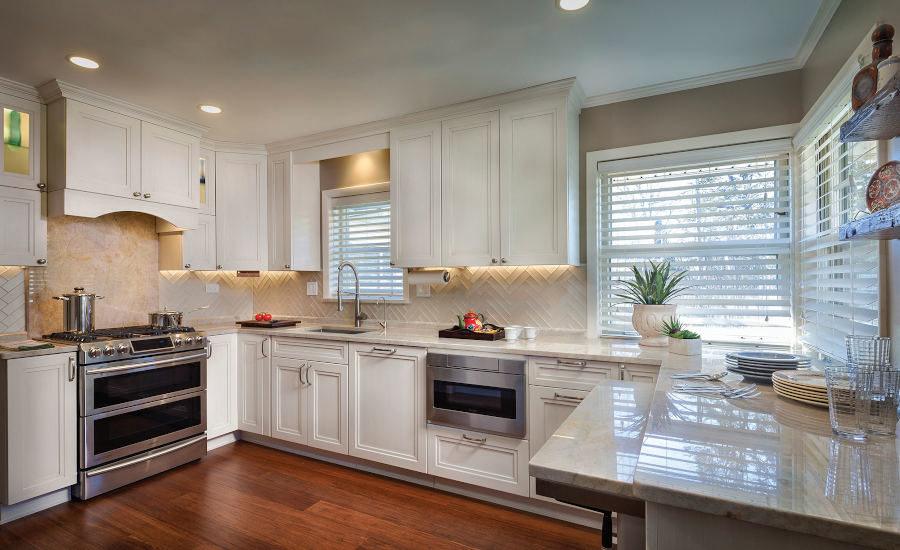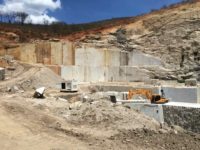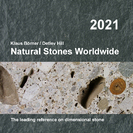Leslie Markman-Stern is the president of Leslie M. Stern Design located in Chicago, IL. She has been in the design business for the past 34 years. She originally ran an art department with students with hearing impairments. She now takes that passion for helping others and uses it in her designs.
CSTD: Talk a bit about your company
LS: My background in interior design is primarily commercial and residential work. A lot of my design work focuses on people with disabilities and seniors. In the commercial field, whenever you design has to be ADA compliant. For example I recently worked on an accounting firm bathroom and it has to be applicable for anyone that has a disability. Either for those at the firm or anyone who may come in. The same is with a hospitality design or any other design.
When it comes to the residential work I do, your design has to keep in mind if this owner or a possible future owner is someone with little kids. You want the environment to be friendly for a child. Same thing for people who are 99. This is also good for people who may eventually sell their house, it helps with the resale of their property.
Office settings are really interesting because you can have five generations working under one roof. You can have older generations, all the way through millennials, it needs to work for everyone. Same goes for anyone with any health issues. If someone has a back issue, you want them to use that space. New design is health and well being.
When it comes to the materials you also have to pay attention to the use of the material and how it is prepared. A client wanted a beautiful stone floor but you have to think, does it have to polished where it makes it slippery. You can hone it, so it gives you more traction when you walk around on it. It is still flat and beautiful. Some people can find the high polish disorienting because of the reflection. It’s still beautiful you still see the veining and the beautiful qualities. Then what if you spill something it’s still easy to take care. These are all different things you have to keep in mind before finishing up your design.
CSTD: How often does your company use stone in its designs?
LS: I use it a lot. I like the materials. I think they are long lasting, they hold up better. They can be integrated with other materials, I am not using Formica. I use quartz for anything as well. You can use stone so many different ways. Quartzes are easy to take care of. With certain stones there is a worry with how well it will be taken care of. You can use a marble for a reception desk but you have to make sure you educate the customer.
When educating the customer we ask what are the functions that are going to take place here. If it’s a reception area and they are bringing their briefcase or signing forms and it’s a dark marble that would work. If it’s a white marble I may worry about staining. If it’s dark you probably won’t see it. If it’s a table they are going to eat at you need to think what the best material to use in that space is. I want to find out from them how the space is going to be used. I also like stone as a flooring option. For example with public bathrooms, I like to use stone but would generally use smaller pieces, with more grout for better traction.
CSTD: How often do you use tile in your design?
LS: Getting back in bathroom floors I like using tile because it is a wet area, the more grout lines will gives you a better traction. Sometimes in spaces they have showers in office so you definitely want to have tile floors for that purpose. Sometimes it’s easier for people to navigate on. It gets better traction on public space. When you have a nice tile backsplash it can give a lot of personality to the space. Accents are great. In a residential setting as well, kitchens and bathrooms. Also you can cut into a floor tile with big format tiles and use smaller pieces to create an interesting design, even in a tabletop.
CSTD: What’s a project that you have done with stone and/or tile that you’re proud of, talk about it a bit:
LS: I did a law office downtown Chicago. They have 20 partners. We wanted a table that would seat twenty people. We used four slabs of stone that I selected and had fabricator make it seamless. Made for a great conference table that they could use in the conference room. Also, if they wanted to entertain the table could be used for that as well. They could place refreshments on that table. When I design a space I think multipurpose. They were very happy and the color and color scheme was great. The office setting should show the culture of that firm. User friendly and at the same time be maintenance free.
CSTD: How do you go about choosing stone for a project?
LS: My design doesn’t look like one design or another. I design for that particular client. I ask them, What are you trying to express here? What is the culture? I am trying to get an analysis of who they are. Then I am giving them options that fit in that environment. Not just for their employees but also for their clients to be comfortable. I also think about the people who are maintaining all of the stone. The people who have to take care of it. I ask who is cleaning it because if they don’t do a good job I am not going to specify a highly polished marble in a space that is not going to be taken care of properly. As far as quartz materials then yes you should clean it up right away but it won’t stain or etch.
CSTD: What are some trends you are seeing out there right now with stone?
LS: More neutral colors. Grey has been a big thing recently, I think about 20 years ago they killed it. But as of right now, I am seeing more and more grey. Lots of grey in quartz and natural materials. Whenever the vendors come, they seem to pushing grey more and more.
We have been using a lot of quartz recently. I would say the client has been more educated about quartz and natural materials. I definitely think natural stone is beautiful, it’s great to see on back of wall or on logo. It will tie in with a scheme really well.
Right now, white marble quartz is still popular. I am seeing a little darker colors. Residentially still lots of whites. White kitchens are still really trendy. Whites are good for reflective properties. Working in a space it is going to give you more light. This goes back to the five generations working in an office setting. That white counter will be better for reflective light vs darker. Space for people collating, they are going to lean toward a lighter color than a darker. Same with people working at night.
CSTD: What trends are you seeing with tile?
LS: I think they killed it with that vertical tile that has been used for so long. It looks nice but it’s very trendy. I think in five years you won’t see as much of that. You want something that is more timeless instead of a product you would be tearing out in a few years. I think subway tile will always been in style. Right now you are seeing larger format sized tiles being used on the floor. They are integrating it with smaller tiles. I am still seeing a large trend for larger format tiles for flooring for bathrooms and kitchens and also for commercial spaces. I think we got away from mosaics a bit, I don’t see them being used as much anymore. We may use mosaic tile sheets for backsplash but not for flooring. Unless they are trying to copy something unless that’s the design you want.
As far as colors generally it is neutral but sometimes you integrate it with some color too. And mosaics is always great to use in the shower for traction. Works great with heated floors because we have to adjust the height of the floor with drainage. So we want tile that is small with linear drains. So you can pitch the floor correctly. Then there doesn’t have to be as many cuts.
CSTD: What advice would you offer to a young designer?
LS: I would tell them to think about the project, think about being timeless. Think about appealing to different people. Trying not to be too trendy. I think commercial or residential the client will be happier with longevity with designs. Porcelain, all types of materials there will use of ease. Easy to clean, easy to take care of. Client will thank you later. Always think about the use for.
CSTD: Anything else you would like to mention?
LS: I think people are thinking about green design, which is important. People are purists and when they are not going to go with quartz they are going to go with natural materials. I think that’s an important valuation with your client. Tell them that let’s go with something green. Explain to them why stone is a green project because of where it comes from, how long it will last. People are becoming environmentally conscious and I think that’s a really good thing.








